- About MAA
- Membership
- MAA Publications
- Periodicals
- Blogs
- MAA Book Series
- MAA Press (an imprint of the AMS)
- MAA Notes
- MAA Reviews
- Mathematical Communication
- Information for Libraries
- Author Resources
- Advertise with MAA
- Meetings
- Competitions
- Programs
- Communities
- MAA Sections
- SIGMAA
- MAA Connect
- Students
- MAA Awards
- Awards Booklets
- Writing Awards
- Teaching Awards
- Service Awards
- Research Awards
- Lecture Awards
- Putnam Competition Individual and Team Winners
- D. E. Shaw Group AMC 8 Awards & Certificates
- Maryam Mirzakhani AMC 10 A Awards & Certificates
- Two Sigma AMC 10 B Awards & Certificates
- Jane Street AMC 12 A Awards & Certificates
- Akamai AMC 12 B Awards & Certificates
- High School Teachers
- News
You are here
Mathematical Treasure: Four Works of Christopher Clavius
The collection of books featured here was produced by the Jesuit Christopher Clavius (1538-1612). Clavius was the most influential German mathematician of the 16th century. He reformed the curriculum of the Jesuit universities and colleges of the period, helping to devise the “Ratio Studiorum,” the program of studies to be followed by all Jesuit schools. Clavius strengthened the mathematics curriculum and the way it was taught. He was a prolific author and translator of classical works, and was particularly respected for his knowledge of horology. In reworking the calendar for the Catholic Church, Clavius proposed reforms that eventually were adopted as part of the Gregorian Calendar in 1582.
The following three images were obtained through the kind cooperation of the Burns Manuscript and Archival Collection of the Libraries of Boston College. The first three images of Clavius’s Algebra were provided by the Libraries of Amherst College, Amherst, Massachusetts, and the latter three by ETH-Bibliothek, Zürich, Switzerland. You may use them in your classroom or for private study; for any other purpose, please obtain permission from the Libraries of Boston College or Amherst College or ETH Zürich, accordingly.

Above: title page of Gnomonices Libri Octo (1587). This is a book on constructing sundials and determining time by solar reckoning.
The image above is provided courtesy of Burns Manuscript and Archival Collection, Boston College Libraries.

Theodosius of Bithynia (formerly believed to be from Tripoli) (ca. 100) was a Greek mathematician and astronomer. He wrote several minor works on geometry and the properties of spheres, which eventually found their way into Europe via the efforts of Arabic translators. The most important of these works was Theodosii Tripolitae Sphaericorum Libri III (or Theodosii De Sphaericis: Libri Tres) (1516). The title page above is from the 1586 commentary by Christopher Clavius.
The image above is provided courtesy of Burns Manuscript and Archival Collection, Boston College Libraries.
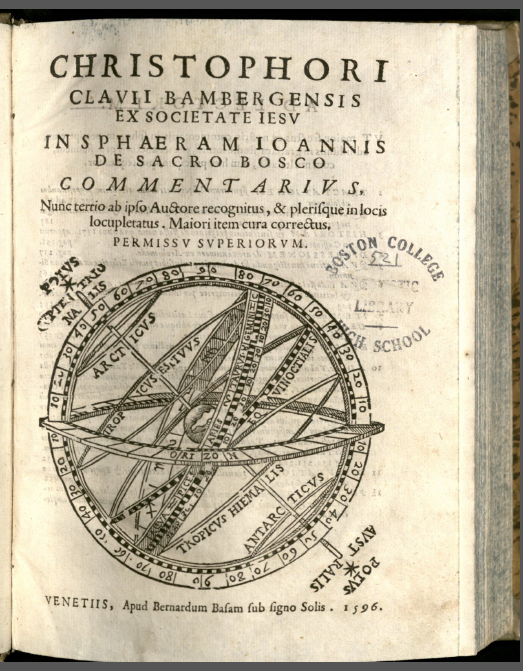
Johannes de Sacrobosco (c. 1195-1256) was a French monk and astronomy professor at the University of Paris. His most important work was Tractatus de Sphaera (On the Sphere of the World) published in approximately 1220. This brief book of only four chapters had a profound influence on astronomical thinking. The title page from Clavius’s 1596 edition are shown above.
The image above is provided courtesy of Burns Manuscript and Archival Collection, Boston College Libraries.
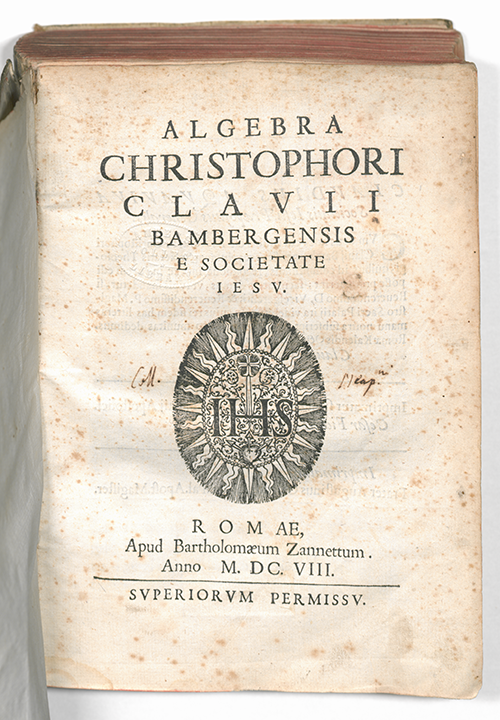
Above: Title page from Christopher Clavius’s Algebra (1608), which was a well-respected text used over the following century.
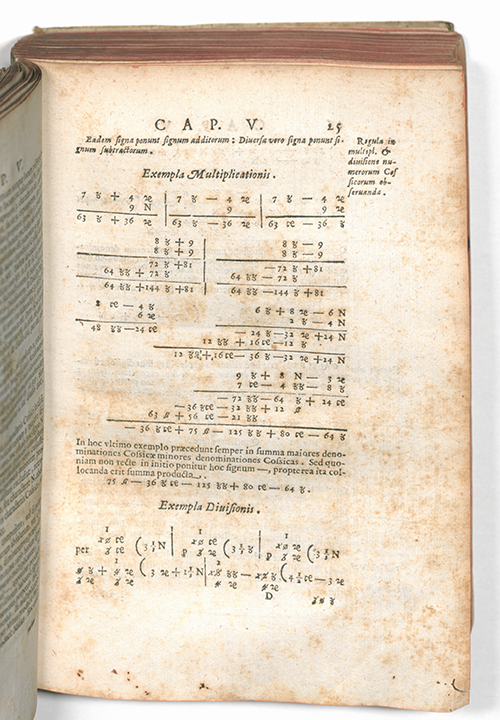
In his Algebra, Clavius introduced new symbolism; for example, he used enclosure by parenthesis to designate an aggregate quantity.
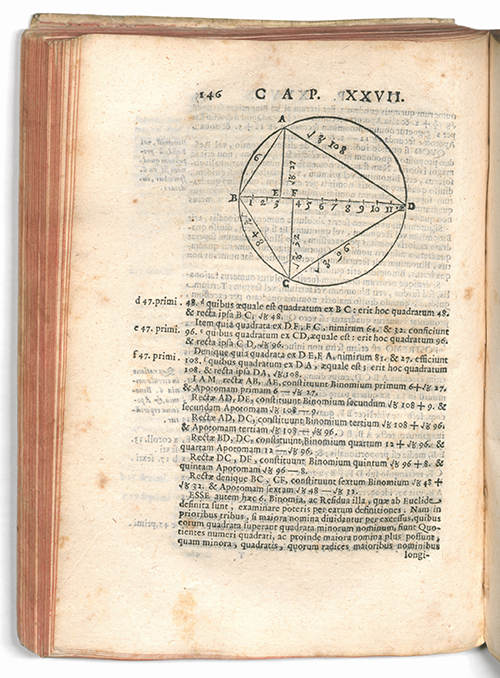
The three immediately preceding images are provided courtesy of the Libraries of Amherst College, Amherst, Massachusetts. You may use them in your classroom or for private study; for any other purpose, please obtain permission from the Libraries of Amherst College.
The “Table of Contents” of the Algebra of Christopher Clavius (below) provides an outline of the algebra topics studied at this time.

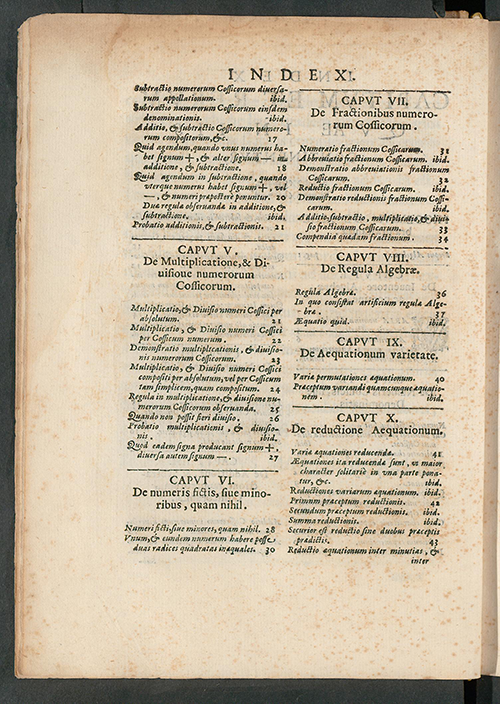

The preceding three images were obtained through the courtesy of ETH-Bibliothek Zürich. The book may be viewed in its entirety via e-rara: http://dx.doi.org/10.3931/e-rara-11935
Frank J. Swetz (The Pennsylvania State University), "Mathematical Treasure: Four Works of Christopher Clavius," Convergence (August 2015)




